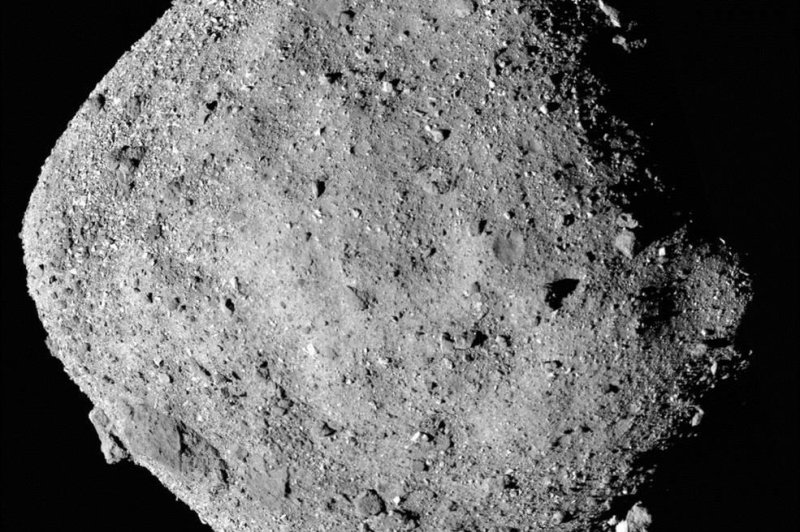Early observations by NASA's OSIRIS-REx spacecraft suggest the asteroid Bennu hosts water. Photo by NASA/Goddard/University of Arizona
Dec. 11 (UPI) -- NASA's OSIRIS-REx spacecraft has discovered water on the asteroid Bennu.
Data collected by the probe's two spectrometers, OVIRS and OTES, revealed the presence of hydroxyls, molecules featuring bonded oxygen and hydrogen atoms. The discovery suggests Bennu is covered in water-bearing clay minerals.
"The presence of hydrated minerals across the asteroid confirms that Bennu, a remnant from early in the formation of the solar system, is an excellent specimen for the OSIRIS-REx mission to study the composition of primitive volatiles and organics," Amy Simon, OVIRS deputy instrument scientist at NASA's Goddard Space Flight Center, said in a news release. "When samples of this material are returned by the mission to Earth in 2023, scientists will receive a treasure trove of new information about the history and evolution of our solar system."
OSIRIS-REx arrived at its asteroid target earlier this month. Shortly after its rendezvous, the probe's instruments began surveying the asteroid target. In addition to studying the chemical composition of Bennu's surface, the spacecraft's instruments are helping scientists map the asteroids shape and contours.
OSIRIS-REx's surveying efforts will continue for the next year. Over the next several months, the probe will execute a series of flybys to get a closer look at some of Bennu's more unique features. The spacecraft will swoop by the asteroid's equator and poles. Some of the approaches will put the probe within 4.4 miles of the asteroid's surface.
With each flyby, the maps of Bennu will become more detailed. Science will also use OSIRIS-REx's observations to refine estimates of the asteroid's mass and spin rate. The new data will help scientists better understand how asteroids form and evolve.
Updated maps will also help OSIRIS-REx perfect its orbit around the asteroid, as well as identify points of scientific interest. The data will also help scientists choose where OSIRIS-REx will reach down with its robotic arm and scoop up regolith -- rocks and dust -- from Bennu's surface.
The earliest observations show Bennu has a balanced mix of more heavily bouldered regions and relatively smooth areas.
"Our initial data show that the team picked the right asteroid as the target of the OSIRIS-REx mission. We have not discovered any insurmountable issues at Bennu so far," said Dante Lauretta, OSIRIS-REx principal investigator at the University of Arizona, Tucson. "The spacecraft is healthy and the science instruments are working better than required. It is time now for our adventure to begin."















